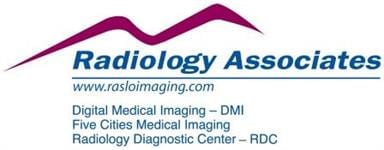Our Team

Joseph Garcia
Programming Lead
Joseph Garcia is a sixth year industrial engineering student at Cal Poly San Luis Obispo, with interests in lean business practices and applications. He has previously worked for Webcor Builders on a process improvement project, which analyzed areas of waste and made recommendations for future project planning. He plans to keep expanding his knowledge in this field and to work for a business that allows him to apply lean principles to solve complex problems. For this project he was mainly in charge of constructing the automated approval workflows.
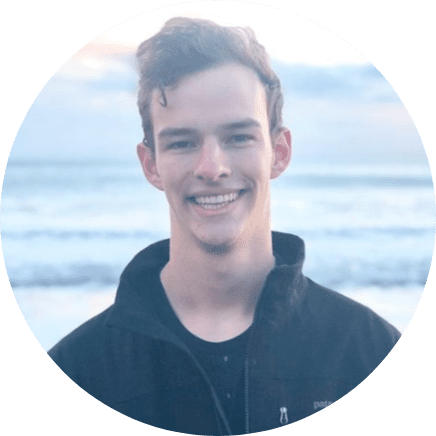
Christopher Striff
Data Visualization Specialist
Christopher Striff is a fourth year California Polytechnic State University student pursuing his bachelors in industrial engineering. He will earn his degree in June of 2021, and continue his education into the workspace as a Reliability Engineer employed by Lockheed Martin. Within this role, he will manage IIoT networks operating in government classified areas to achieve operational milestones to continue production of the F-35 fighter jet. Currently, he works closely with IME department and serves as a student assistant for the Ergonomics laboratory to assist peers with project goals for the 2021 Spring quarter.
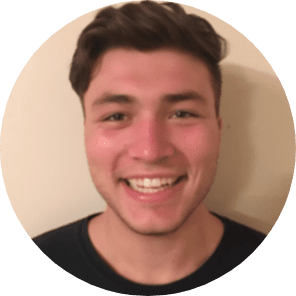
Hernan Rodriguez
Media Development Technician
Hernan Rodriguez has pursued a degree in industrial engineering at Cal Poly SLO and is graduating in June of 2021. With experiences studying abroad in China and working as a project analyst for the systems optimization club, Hernan has been able to develop strong communication skills in environments where it may be difficult to do so. This coupled with a solid understanding of engineering design, manufacturing, and testing, Hernan looks to join a company that can create meaningful solutions for stakeholders and clients alike. The tutorial video section of the project was headed by Hernan putting his communication skills to use.
Acknowledgements
Thank you to our project sponsor Julie Bell for consistent communication over the 9-month project lifespan. We’d also like to thank our project advisor Jill Speece for helping the team overcoming hurdles during the year. Lastly, thank you to Radiology Associates Staff for welcoming our team into improving the non-medical procurement process.
Our Project's Videos
Our Project's Digital Poster
Success Metrics
- 70% reduction in process throughput time
- 50% reduction in rework (10% ->5%)
- 100% stakeholder adoption rate
Objectives
Create a new process with the following goals:
– Accessible platform
– Centralized information location
– Easy to use
– Accommodates all types of users
Final Design
Automated Approval Google Form
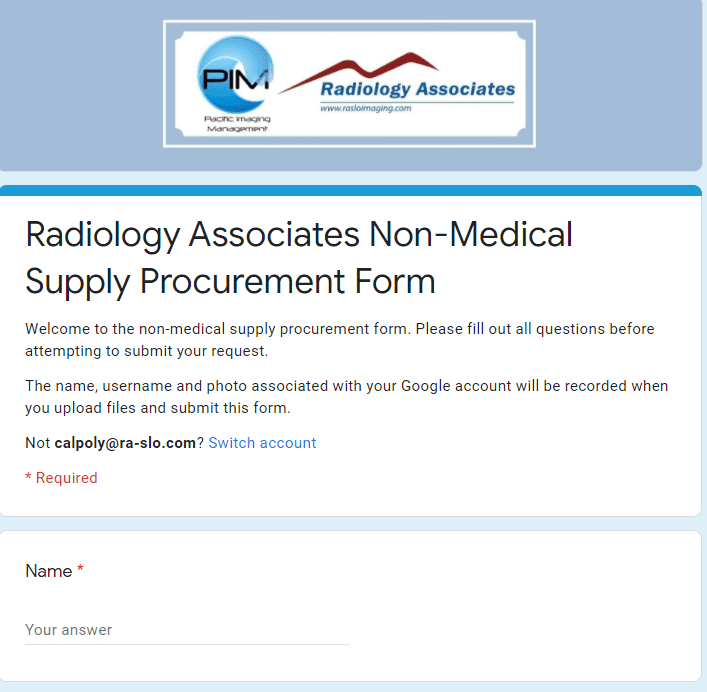
The automated procurement form allows requestors to submit payment documentation, and other relevant information. From there, the logic built into the form will route the request to an approver via email if additional signatures are needed.
Standard Work Documentation
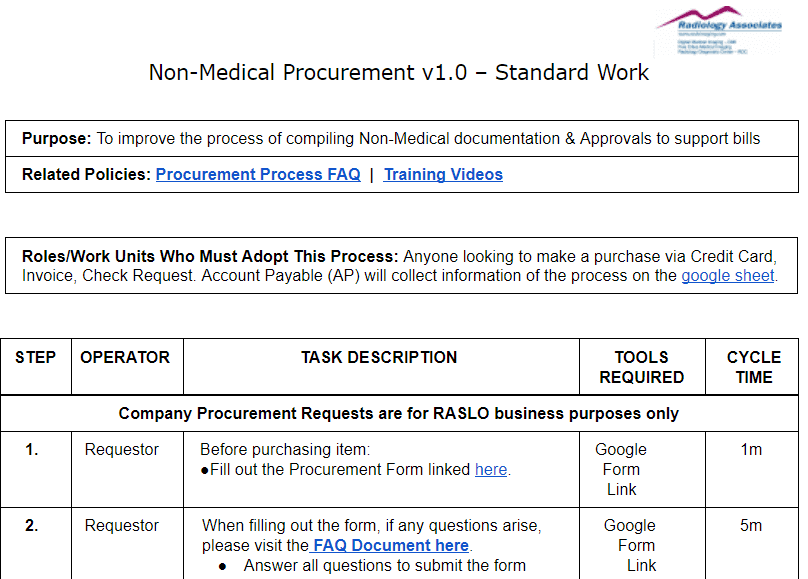
Standard Work documentation created in Radiology Associates internal Google Team Drive allows requestors and approvers to view the step-by-step process in step form.
Employee training videos

Training videos posted to YouTube allows current employees to educate new stakeholders on how to complete the process. Three short, 2 minute videos provide all relevant information needed to successfully complete a request.
FAQ sheet

A FAQ sheet lists questions about the new process thus far. Images, hyperlinks, and detailed answers provide guidance to stakeholders in edge case scenarios.

This project is sponsored by Radiology Associates in San Luis Obispo.
Problem Statement
The procurement process for purchasing non-medical goods and services at Radiology Associates is incomplete, causing financial auditing rework and administrative time loss.
Procurement rework totals 10% during routine accounts payable audits and 200 yearly administrative hours lost rectifying gaps in procurement documentation
Impact Analysis
Cost-Benefit Analysis of potential Solutions

A cost-benefit analysis was presented to project sponsor after literature review and solution design phases completed. Above image details a five-year projection from the three different software platforms researched.

A simplified version of the CBA created for clarity. Approvals yields the highest financial net benefit after 5 years ($12,642). Project sponsor decided to continue the project with Google Form Approvals as a result.
Implementation Plan
Step 1: Verify Problem Statement
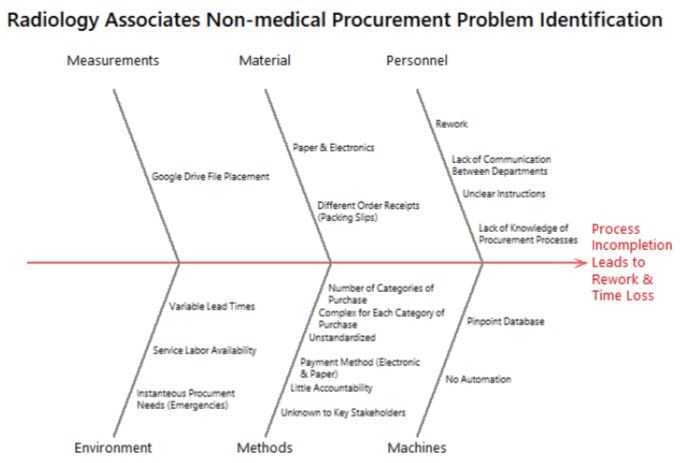
-Conducted virtual kaizen event to gauge stakeholder engagement
-Collected numerical data to focus final design goals to meet KPI & project goals
Step 2: Literature Review
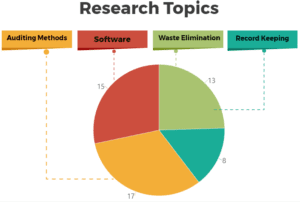
-Auditing Methods, Software Utilization, Waste Elimination, and Record Keeping topics extensively researched to understand the problem
Step 3: Solution Construction and Testing
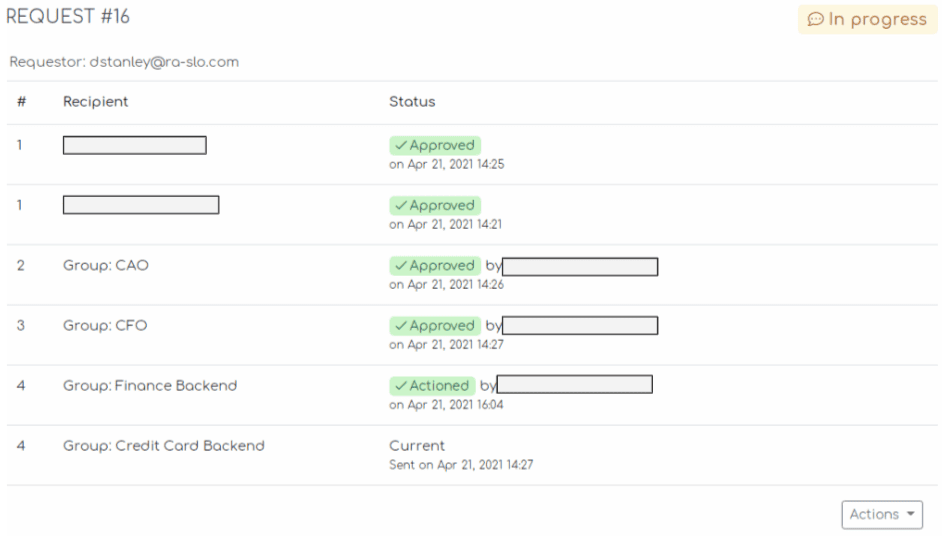
-Internally tested automated email approval functionality to meet throughput and rework KPI’s. Vetted non-approval requests.
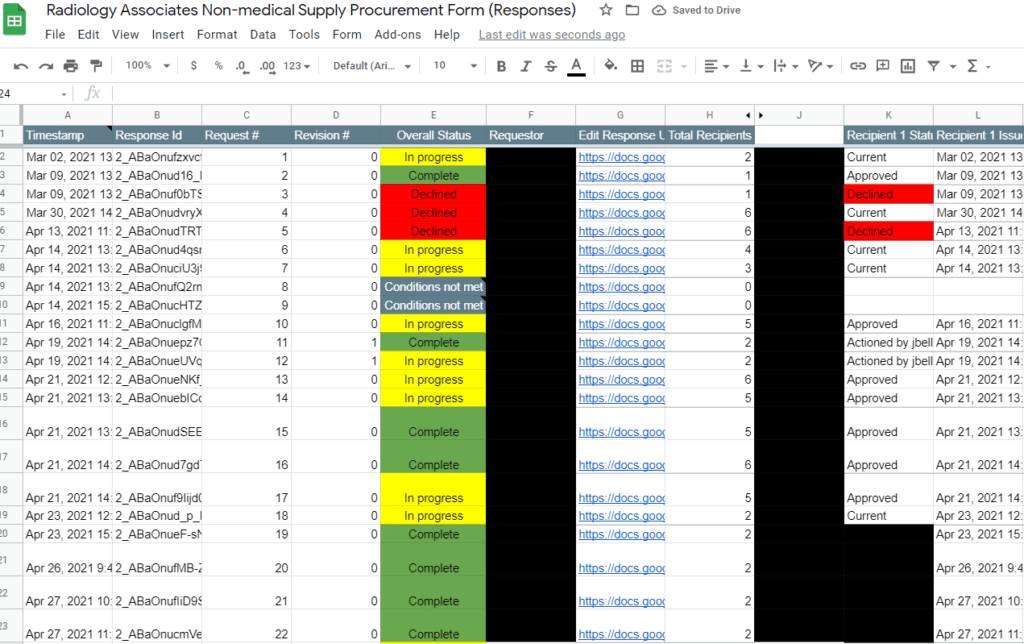
-Mock submissions with project sponsor to verify logic statement and resolve bugs before implementation to key stakeholders
Solution Design
Researched three different software packages & compared benefits
Due to budget cuts, solution required little upfront investment
Software Platform #1: ImageNow

-All procurement features available
-Long implementation time
-Expensive ($30k+ upfront cost)
Software Platform #2: Google Form Approvals
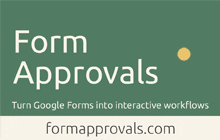
-Most procurement features available
-User-built automated workflows (and emails)
-Affordable cost with biannual savings
Software Platform #3: Google Form Publisher
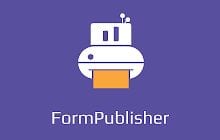
-Few features available, Google drive integration
-PDF editor, no direct approval benefit
-Lacks automated notifications
Conclusion
Project Update
-After 60 submissions, rework target met (now 4.8%)
-Kaizen training event achieved adoption KPI
-Stakeholder confirmed qualitative goals

